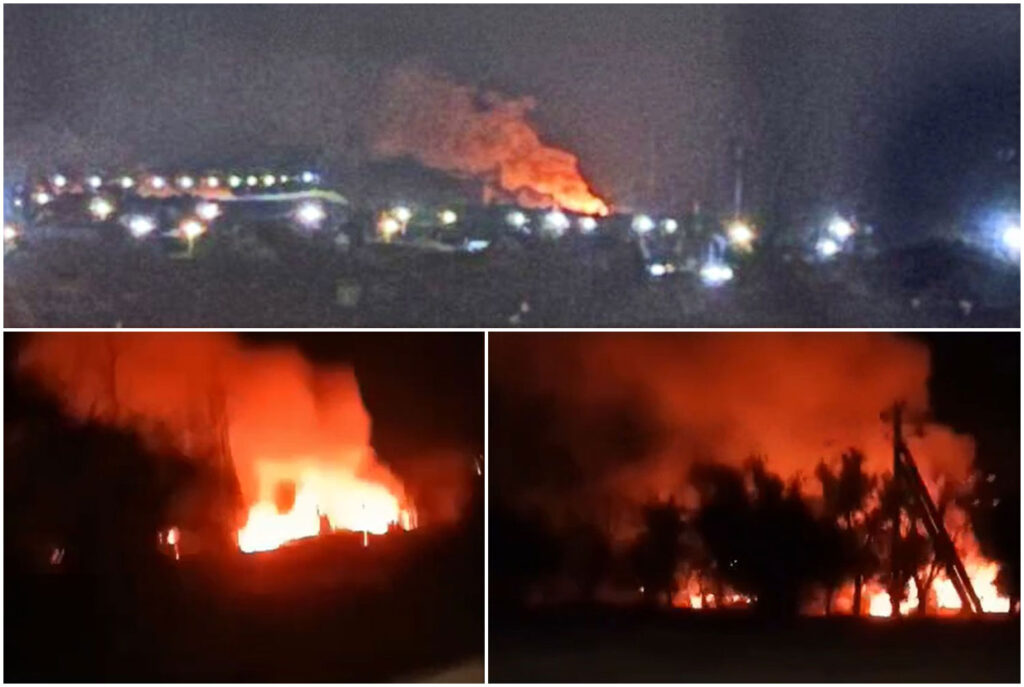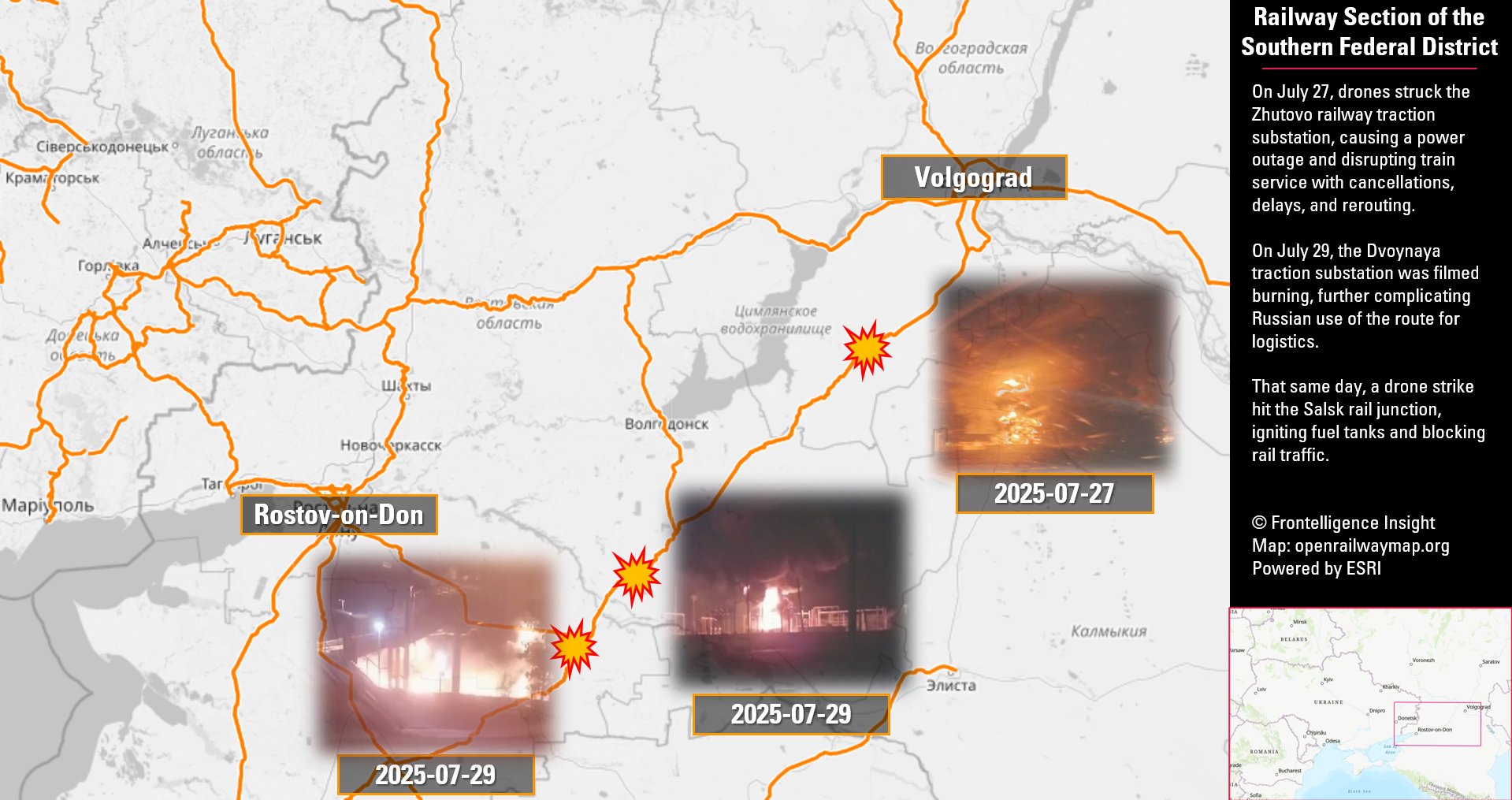Ukraine’s drone offensive pounds Volgograd–Rostov railway again — Kotelnikovo burns in overnight attack (video)

Last night, Ukrainian drones hit the Volgograd-Rostov railway section again, now setting fires at Kotelnikovo station and forcing Russian authorities to restrict train traffic. The attack caused blazes at an electrical substation. Kotelnikovo is situated around 400 km east of the frontline.
Drones strike Kotelnikovo station on Volgograd-Rostov railway
Telegram channels and OSINT analysts reported that a night drone strike set the Kotelnikovo station area in Russia’s Volgograd oblast on fire. Videos from local residents showed burning railway infrastructure, including a traction substation. Fires were visible across the station area, while the governor of Volgograd oblast, Andrei Bocharov, confirmed that movement of trains was temporarily restricted.
Bocharov wrote, as cited by Astra, that Russian air defenses allegedly repelled what he described as a massive drone attack on transport and energy facilities. He claimed there were no injuries. The governor added that dry grass ostensibly caught fire in Surovikino district and that specialists were working to restore gas supply to about 65 single-family homes in Kotelnikovsky district.
According to him, sappers are clearing drone wreckage from railway tracks near Tinguta station in Svetloyarsky district.
“To clear the wreckage of the drones located on the railway tracks, train traffic was temporarily restricted. No damage to the tracks was recorded,” Bocharov claimed.
Satellite data confirms multiple fires around Kotelnikovo
OSINT analyst Tatarigami, founder of Frontelligence Insight, highlighted numerous heat signatures detected by NASA FIRMS satellites around Kotelnikovo after the night attack. He added that geolocation data confirmed the fires were in the area of the railway’s electrical substation.

He noted that this was another strike on the same Volgograd-Rostov railway section.

Ukrainian drones turned Russia’s Salsk station into a firestorm — fuel train destroyed (video)
“Another successful drone strike targeted the same railway section between Volgograd and Rostov-on-Don. Multiple fires are visible,” Tatarigami posted.
This marks the fourth strike on the same Russian rail line since 27 July. On 29 July, drones hit Salsk, a key rail junction in Rostov Oblast, setting a fuel train at the station on fire. The same night, they also struck the railway’s power substation in Orlovsky. Two days earlier, on 27 July, another drone attack destroyed a traction substation in Zhutovo in Volgograd Oblast, causing major delays and forcing Russian trains to be rerouted.
Similar drone strikes also took place two weeks ago in Rostov oblast, hitting a rail station in Kamienolomni on 21 July and a railway substation in Novocherkassk on 23 July.
Read also
-
Ukraine’s drones roar deep into Russia — Penza military electronics plant in flames (video)
-
Ukrainian drones turned Russia’s Salsk station into a firestorm — fuel train destroyed (video)
-
Russia’s Volgograd railway power substation burns after night drone raid (video)
-
Russian power station burns after drone strike—Novocherskassk traffic gridlocked (video)